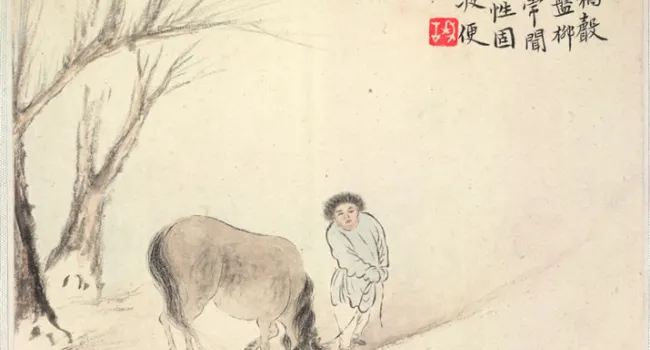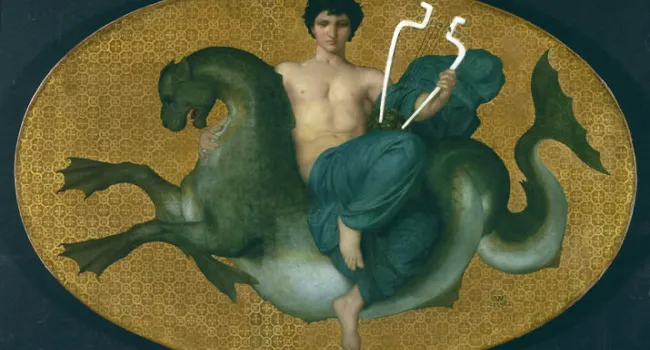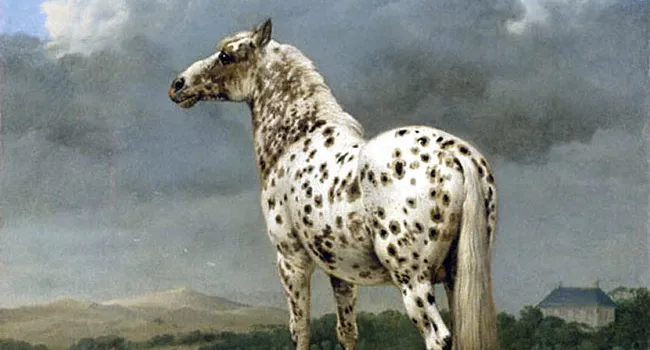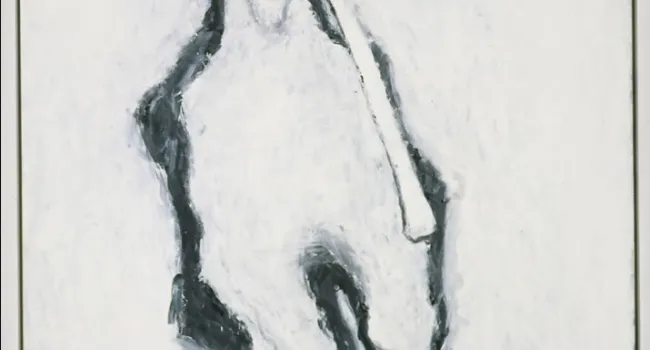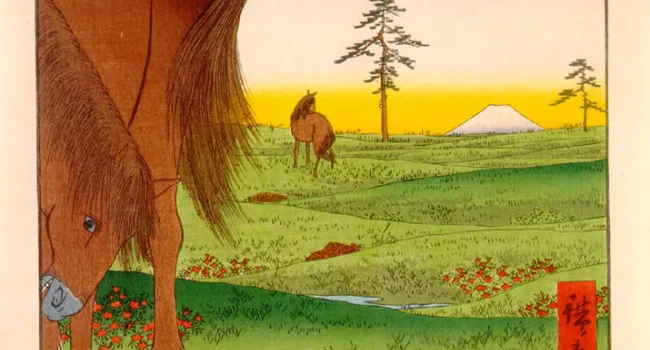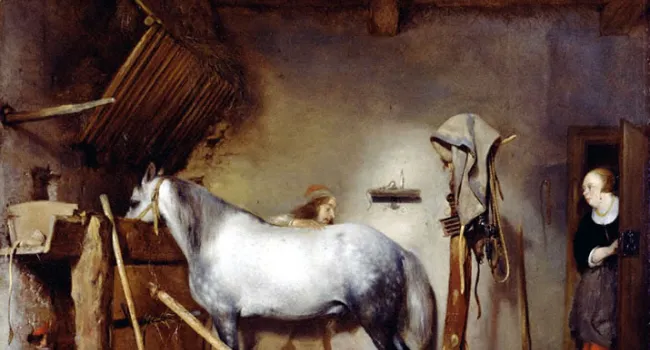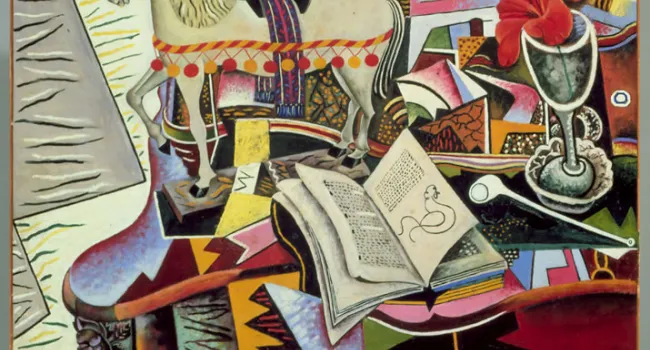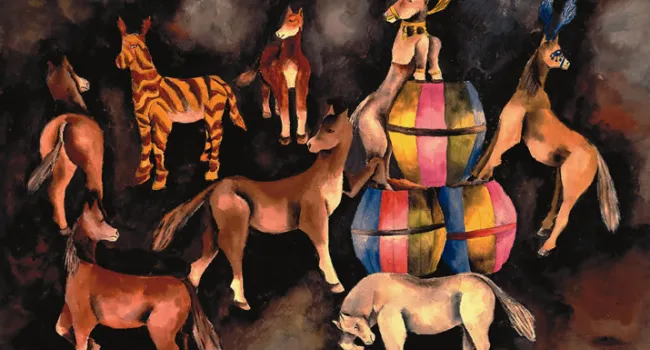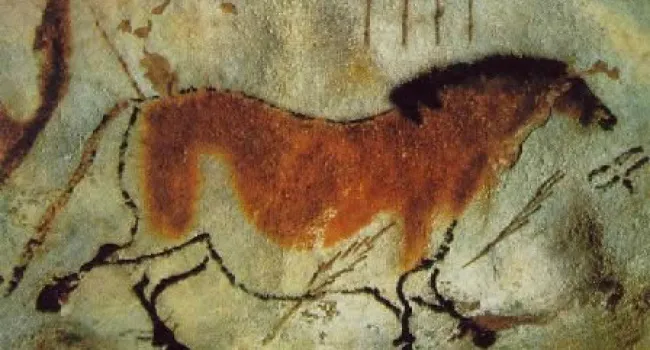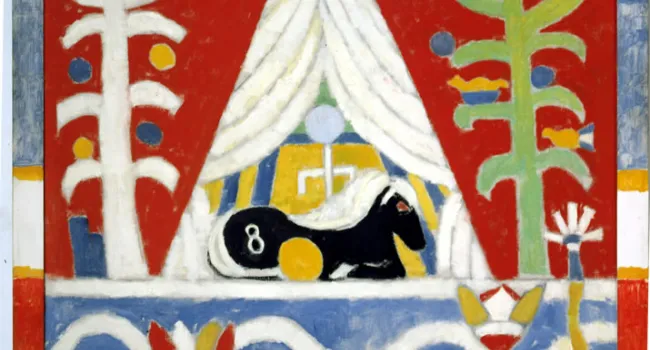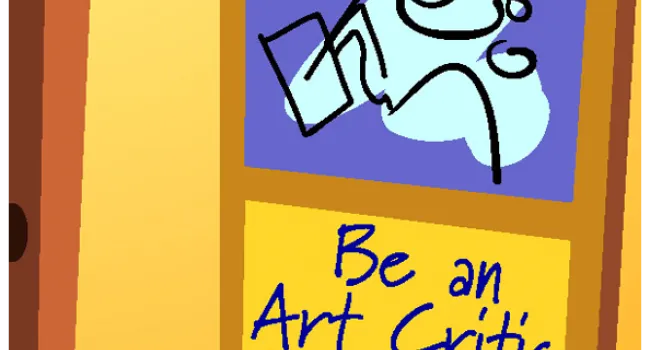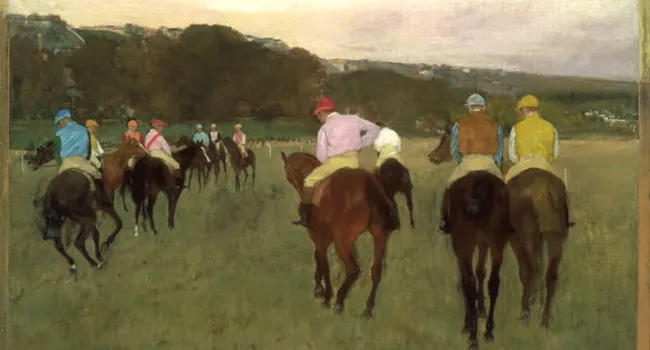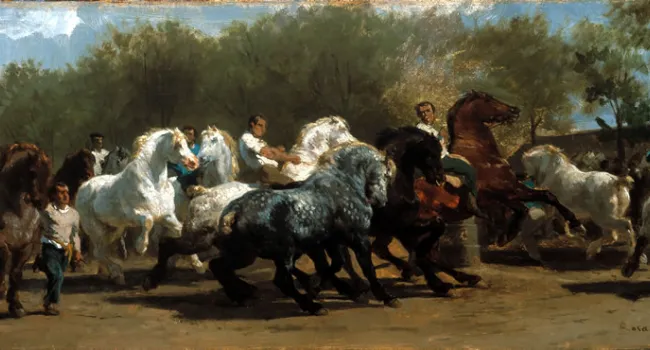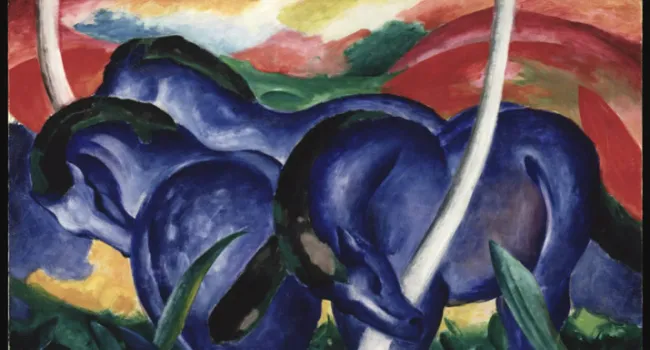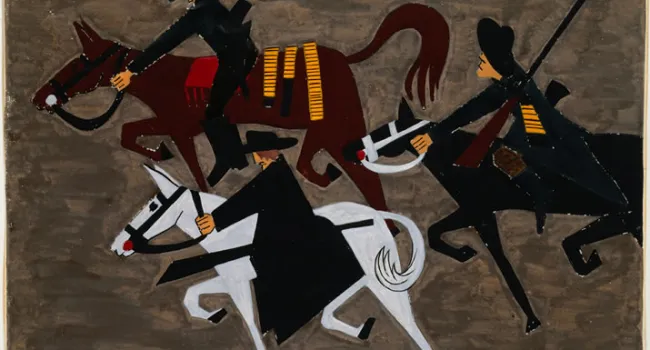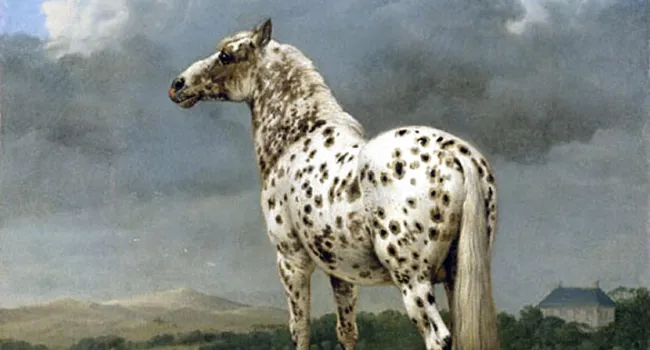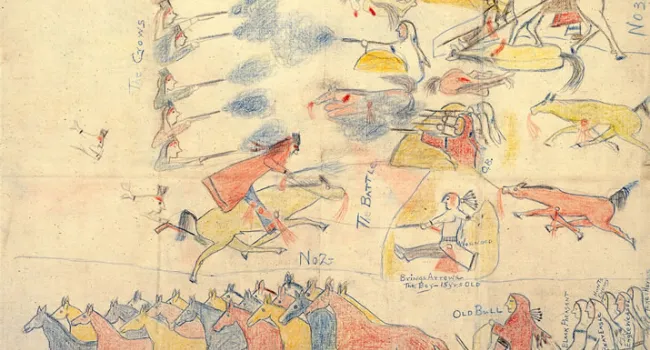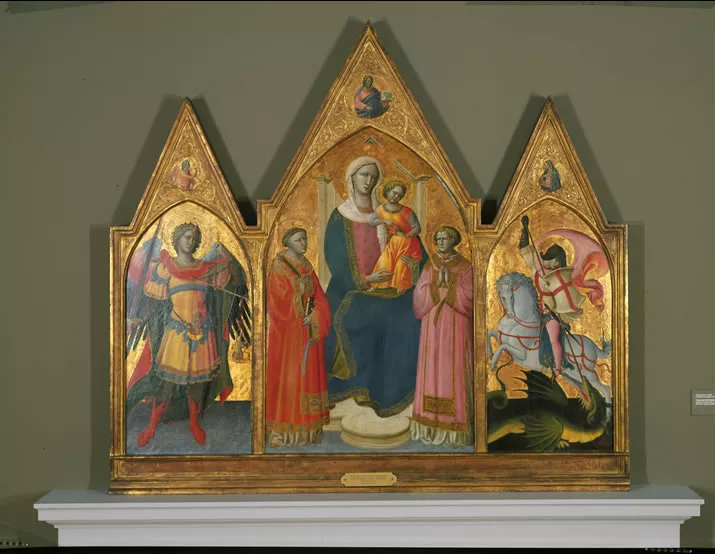
Giovanni dal Ponte
A Closer Look
Giovanni dal Ponte's triptych has a strong sense of balance. The center panel shows Mary and Jesus Christ with Saint Lawrence and Saint Stephen on either side. Notice how big the baby Jesus and his mother, Mary, appear. This is because they are more important than the other figures. Showing importance in this way is a concept from the Middle Ages. Later, during the Renaissance, artists used proportion and perspective to create a sense of realism and depth.
About the Painting
Madonna and Child Enthroned with Saints and Angels is an altarpiece for the front of a church. Because it has three panels it is called a triptych. An artwork with two panels is called a diptych. The figures in this painting look more like real people than the figures in most medieval paintings. This shows the influence of the Renaissance idea called Humanism. Yet the painting's flatness and lack of perspective make it more like artwork of the Middle Ages, also known as the medieval period.
About the Artist
Giovanni Dal Ponte lived in Florence, Italy during the end of the 14th and beginning of the 15th centuries, an exciting time to be in the birthplace of the Renaissance. Dal Ponte means "from near the bridge" in Italian. Many Italians in those days were named for the place they lived or for personal features. For example, one painter was named Giorgione, which means "Big George." What would your name be?
Glossary
Middle Ages: the period of European history from about A.D. 475 to about 1475.
Renaissance : the period of European history from the 14th century through the 17th century, when art, science, architecture, and literature blossomed.
Medieval: relating or belonging to the Middle Ages.
Write About It
- Make a list of what you see.
- How did the artist use the elements and principles of design?
- What do you think the painting means? How does it make you feel?
- Select two paintings to compare & contrast.
